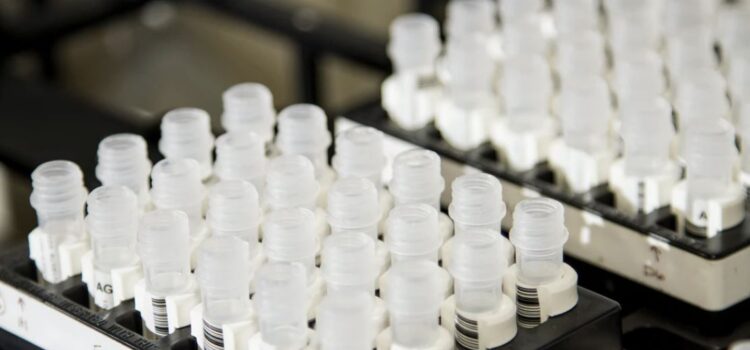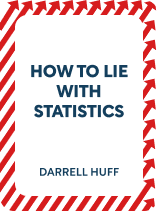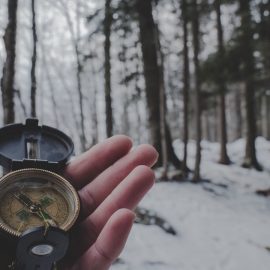

This article is an excerpt from the Shortform book guide to "How to Lie With Statistics" by Darrell Huff. Shortform has the world's best summaries and analyses of books you should be reading.
Like this article? Sign up for a free trial here .
How do you get a good statistical sample? How do some people manipulate their sample selection to mislead others?
In How to Lie With Statistics, Darrell Huff explains the criteria for getting a good statistical sample size. Good sampling in statistics is important because bad sampling can lead to unintentional (or intentional) bias and misleading numbers.
Keep reading to learn how to get a good sample and avoid bad sampling.
Good Sampling Methods
The only way to get a perfectly accurate statistic is to count every entity that makes up the whole. For example, if you want to know how many red beans there are in a jar of red-and-white colored beans, the only way to find out for sure is to count all of the red beans in the jar.
However, in most cases, counting every single entity is impossibly expensive and impractical. For instance, imagine you were trying to know how many red beans there are in every jar on the planet—you’d have to count all the red beans in the world at any given time.
To get around this problem, statisticians count a sample instead of the whole, assuming the sample’s make-up proportionally represents the whole. But just any sample won’t work, they need to use a good sample.
A sample must meet the following two criteria to actually be representative of the whole (and thus, be “good”):
Good Sample Criteria #1: Large. This reduces the effects of chance—chance affects every survey, poll, and experiment, but when the sample size is large, its effects are negligible.
- For example, the probability of getting heads when flipping a coin is 50%. In practice, if you flip a coin 10 times, you’re unlikely to get heads five times. You’ll probably get some other number due to chance—say, three. If you don’t flip the coin any more times, you’re left with the impression that the probability of getting heads is 3/10, or 30%, which is clearly incorrect. You’ll need to flip the coin 1,000 times to reduce the effects of chance and get a figure closer to the real probability of a half.
How big your sample needs to be depends on what you’re studying. For example, if the incidence of polio is one in 500, and you want to test a vaccine, you’ll have to vaccinate far more than 500 people to get any meaningful results about the vaccine’s efficacy. It’s hard to know if the vaccine works if, even without its use, only one person would have contracted the disease anyway.
Good Sample Criteria #2: Random. Every entity in the complete group must have an equal chance of being selected to be part of the sample. Perfectly random sampling is too expensive and unwieldy to be practical. (Even if you were only going to randomly select one bean in 1,000 to be part of the sample, you’d first need a list of every bean in the world to even determine where to find each thousandth bean.) Instead, statisticians use stratified random sampling, which works like this:
- Statisticians divide the whole into groups: for example, people over the age of forty, people under the age of forty, Black people, white people, and so on.
- They select samples from each group. How many are taken from each group depends on the group’s proportion in relation to the whole.
Despite statisticians’ best efforts, bias is always present when choosing samples because:
- Statisticians might get the proportions wrong and over or under-represent certain groups.
- Statisticians can’t always tell which entity belongs to which group. (Shortform example: You might be able to tell how many people have red hair by looking at them, but how do you know if it’s naturally red?)
- When sampling people, interviewers may be biased in their choice of subjects. (For example, if an interviewer has the choice between two people from the same group, she might choose the one who looks friendlier, to make it easier to get her job done.)
- Interviewers might bias respondents. For example, one wartime poll asked Black people living in the South what they thought was more important, beating the Nazis, or bolstering democracy in the US. The Black interviewers found 39% of respondents prioritized beating the Nazis, while white interviewers found 62%. Black people might be more inclined to give white interviewers the answer they think they want, rather than tell them what they actually believe, so that they appear more loyal.
Bad Sampling
Now we’ve looked at what makes good sampling, let’s look at the opposite—bad sampling. There are two ways liars manipulate sampling to skew statistics:
1. They use a small sample size. Because chance affects small samples more than large ones, liars might sample just a few entities so that they can use chance to their advantage. If they don’t get the result they want, they can keep experimenting until chance gives them the numbers they do want.
- For example, if a liar wants to say that her toothpaste reduces cavities, she might ask 12 people to start using it. If this group of 12 doesn’t show any reduction in cavities, she can try the same experiment with another group of 12. Since the only possible outcomes of using toothpaste (and being alive) are getting more cavities, fewer cavities, or the same amount, eventually the 12-person sample will by chance hit on a reduction in cavities.
2. They purposefully bias the sampling. If a liar wants a particular result, she’ll sample the parts of the whole most likely to give them that result.
- (Shortform example: If you want to show that most of your friends believe the world is flat, you might sample five of your Facebook friends. To get the result you want, you’d ask five people who belong to flat-earth Facebook groups, rather than five random friends.)

———End of Preview———
Like what you just read? Read the rest of the world's best book summary and analysis of Darrell Huff's "How to Lie With Statistics" at Shortform .
Here's what you'll find in our full How to Lie With Statistics summary :
- The 10 ways you might end up fooled by statistics
- How to differentiate between legitimate and lying statistics
- Why you can't even trust a graph






